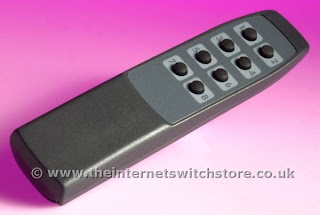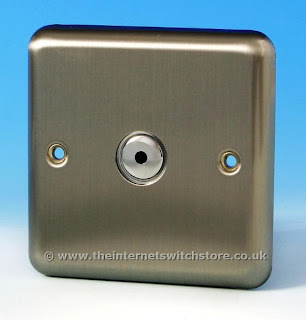Pro's and Con's of Single Use Batteries VS Rechargeable Batteries



Rechargeable Batteries have been around since the 1960's and have improved considerable since the early days, to an extent now that we would argue, there really is not a need for the cheap disposable alkaline batteries. Rechargeables potentially save lots of money. The newer rechargeable batteries can be used to power portable devises for a longer time than alkaline batteries.
Single use alkaline batteries one advantage in that you can buy super cheap ones from 25p. The historic advantage such as they are ready to use straight from the packet is now not important as Uniross and GP now have rechargeable batteries that come pre-charged and can also be used straight from the packet, then recharged once drained.

4 x Uniross AA Multi Usage + Rechargeable Batteries
They are only SINGLE use which leaves you with the end result of throwing batteries in the bin and it all taken to landfill and with the number of charges from a standard rechargeable battery, the number of batteries to landfill can be between 500 and 1,000 per rechargeable battery! (Varying use / conditions / mAh powering / Brand will have fluctuations on number of re-charges).
Low discharge rechargeable batteries also have some advantages being the usual standard of 1000+ recharges which if you do the math, 1 Single use battery will cost approximately £0.25P each x 1000 = £250 x2 (as most appliances use a minimum of 2) cost compared to a rechargeable battery at approximately £1.50 each at 1p per recharge will have a cost of £1.50 + £10 (1,000 re-charges at 1p each = £10) = £11.50 x2(as most appliances use a minimum of 2) cost! (excluding a charger). Just using the above numbers as an example, lets assume that you have a digital camera you use for leisure and work, taking 50 shots a week with two AA batteries. In one year you would spend £25 on alkaline batteries, but only £4 on rechargeables (Even add in the cost of a charger (cheapest around £6), you still make a saving of around £15 in one year from one simple device and application.

VARILIGHT REMOTE CONTROL PACK INC 2 GP RECYKO BATTERIESAs well as the lower cost to you, a positive to the environment is acheived as less waste is produced, take the above example, one use, one year and you would have saved 50 batteries going into land fill.
 GP Rechargeable AA Batteries 2700mAh Pack of 4 units
GP Rechargeable AA Batteries 2700mAh Pack of 4 unitsThe master example: Here I am going to summarise a larger example, all based upon approximations, just on a larger scale to give you more of an idea of the bigger impact:
Family Household, 3 bedrooms, 2 adults, 2 children.
Appliances expected using either AA or AAA batteries, example based upon use within 1 year.
Low drain - expected 4 x re-charge in 1 year: 4 televisions controllers = 8 batteries / sky controller = 2 batteries / home automation controller = 2 batteries / 4 clocks = 8 batteries /
Medium Drain - expected 12 x recharge in 1 year (once per month) - wireless keyboard and mouse x2, 8 batteries / Fire alarm x2, 2 batteries /
High Drain - expected 52 recharge in year (once per week) - digital camera x 2, 4 batteries / Toys 8 batteries in total
Total rec-charges required in 1 year = 824, cost of re-charging = £8.24, 42 batteries at a cost of £1.50 each = £63 + decent charger approx £12 = £75 + £8.24, total cost of £83.24
Compared against alkaline battery cost of 624 batteries at a cost of approx 25p each = £156
Total saving = £72.76 (Year 1 due to cost of buying batteries), saving year 2 just for charing = £147.76
I hope that gives you a good summary, that rechargeable batteries are important, they can save you money and also think about this, the above example would be 624 alkaline batteries in landfill, that if you used rechargeable batteries would not have been there, a massive plus for the enviroment, next time you make that 'cheap' alkaline purchase think to yourself and consider the above.
Thanks for reading, obviously we sell a full range of rechargeable batteries and even include some rechargeables in packages with our remote control handsets. Any comments would be appreciated, email me through ebay or call our store:
0800 043 5532
Ben Sunderland, BA(Hons), ACA - Sat 13th Feb 2010

Full Battery section can be found on
The Internet Electrical Store








































COMMENT:
incandecent bulbs are about 25p each so the led one costs 200times more and although it uses less electricity you heating bill will increase as your no longer getting background heat from old skool light bulbs.
incandecents are very tolerant of electrical spikes, led lights fail much quicker.
RESPONSE:
Thanks very much for your comments, I can see this questions being asked many times, so I am going to detail this for you in some detail: A cheap incandescent bulb will cost you closer to £1, but for arguments sake, lets say your are correct and you purchase a 25p bulb. This will be the worst and lowest quality available, which will mean your bulb will only last approximately 500 hours. The price of an LED (The best cree chip, 4.6w golf ball will cost you £29.99 on our website) being the noted £29.99 this is actually 120 times more expensive than your initial bulb, but has a lamp life of 50,000 hours.
So now your actual cost of the 25p bulb that lasts on average 500 hours, will now need to be replaced 100 times to match the 50,000 hours of the LED bulb, so this now costs you £25.00
Consider this also, 100 trips out to the DIY store etc to collect a bulb at a time, or even a pack of 3,5 or 10. This 'pick up' cost will now (Already at this early stage in the calculation) mean that the cheap 25p bulb is MORE EXPENSIVE than the LED bulb.
Lets say, you live 2 miles from the DIY store and go 100 times to pick a new bulb up. The average cost of running an average car (As indicated by HMRC allowances) is 40 pence per mile, so that would cost you £1.60 x 100 = £160.00 plus if each trip took you 15 minutes (Which is pritty quick) you'd spend over a day of your life, going to the DIY Store, driving your car, picking up your bulb and replacing your bulb.
Not to mention the inconvienience of a blown bulb in the middle of the night, especially if used in an outside light fitting to guide yourself coming into your back garden etc.
So I think you'l agree (My little rant) that at this point (before you consider the energy consumption) the little 'waste of energy and time bulb' has already cost you considerably more than the original 25 pence you spent.
Now lets consider the energy saving, being less than 5w, against say the 50w product, this is a 90% saving on energy. And given you have it on for X hours a day...mmm, I'm not even going to give you a figure, but the total energy cost saving over the 50,000 hours is going to be over £500 per bulb!
Yes AMAZING, if you want to know more call: 0800 043 5532, email: sales@theinternetelectricalstore.com
Also now lets talk about the Heating issue....
Where do I start! It is all about the type of energy and appliances you use to do things, some things are A LOT MORE EFFICIENT THAN OTHERS. so in the is case, USING A LIGHT BULB TO HEAT YOUR HOUSE is ridiculous! I have heard a few things, but this is one of the funniest.Anyway I hope you enjoyed reading what is meant to be a light heated blog, basically saying that LED's will have you money, be more efficient and will be the future of all lighting as we know it.
Ben Sunderland, BA (Hons), ACA - 18.09.2010 - 7.19am